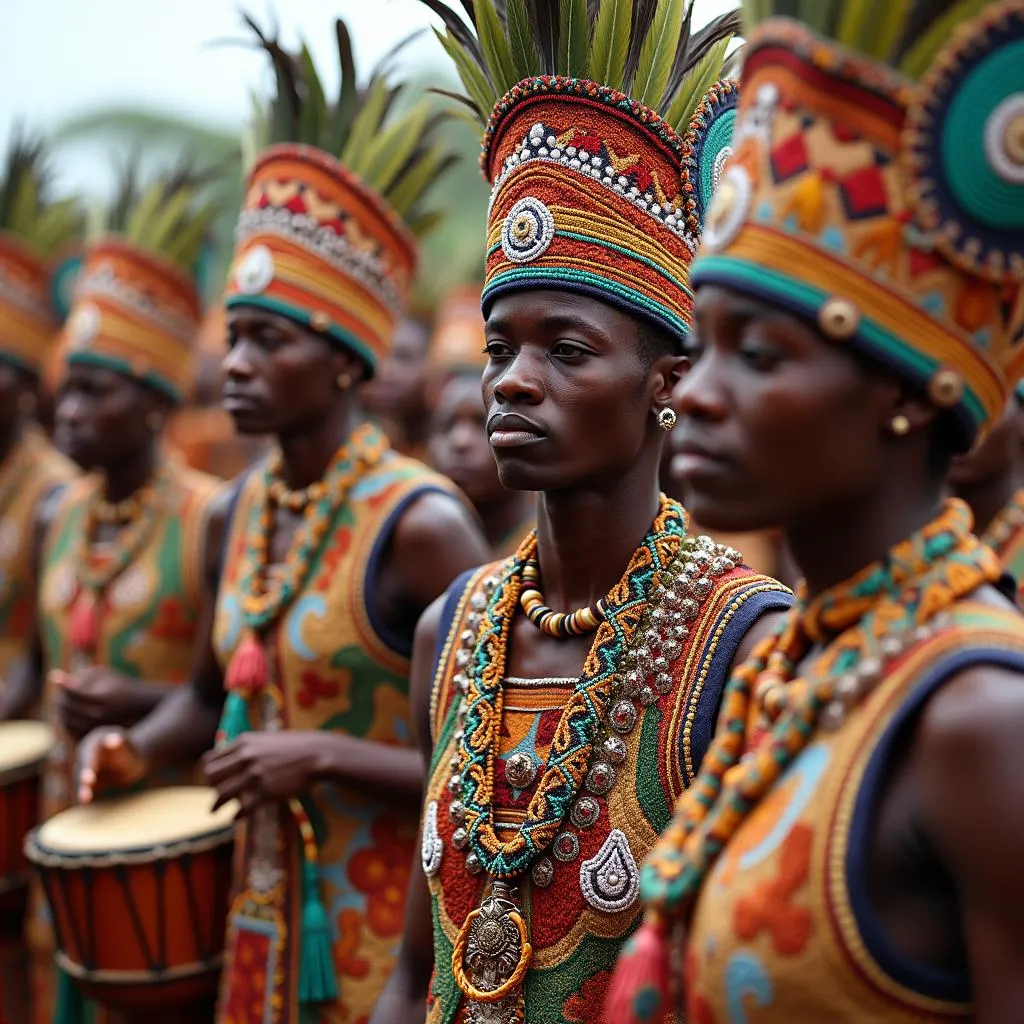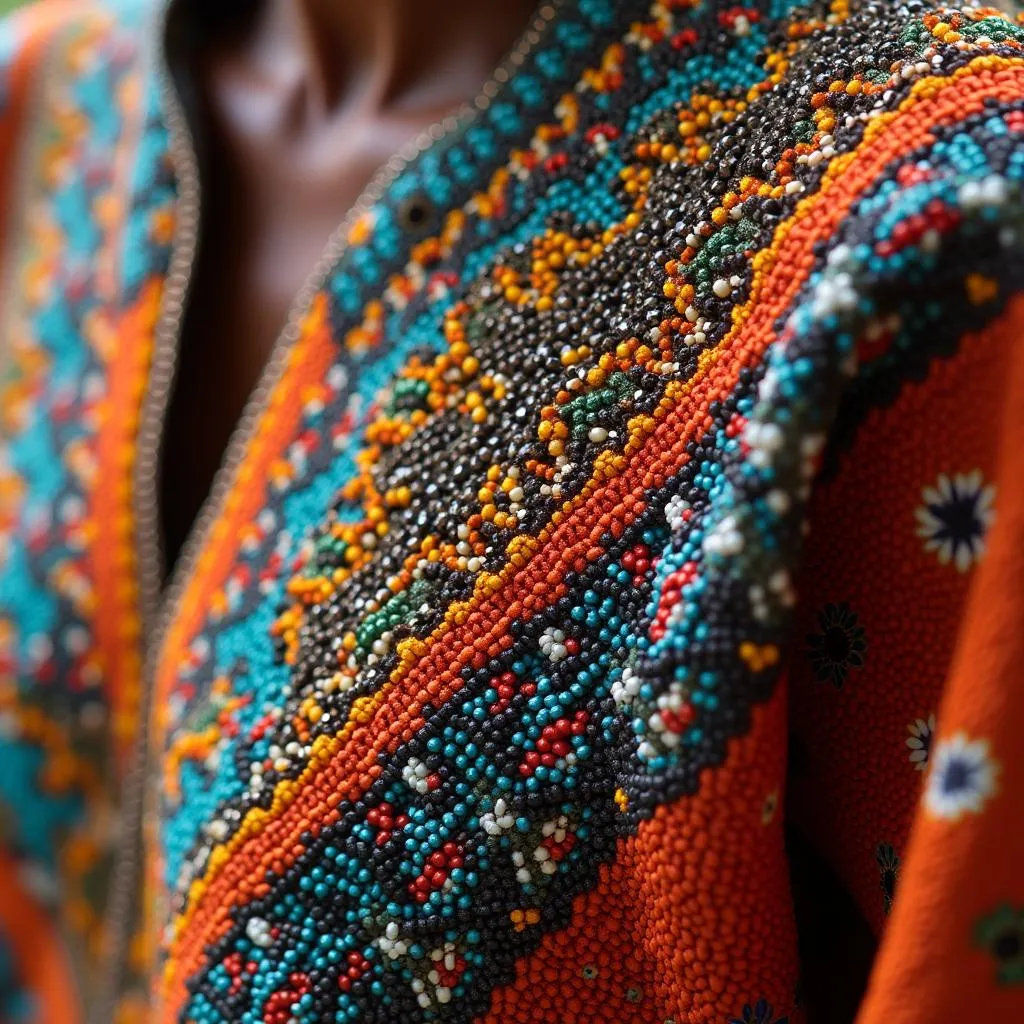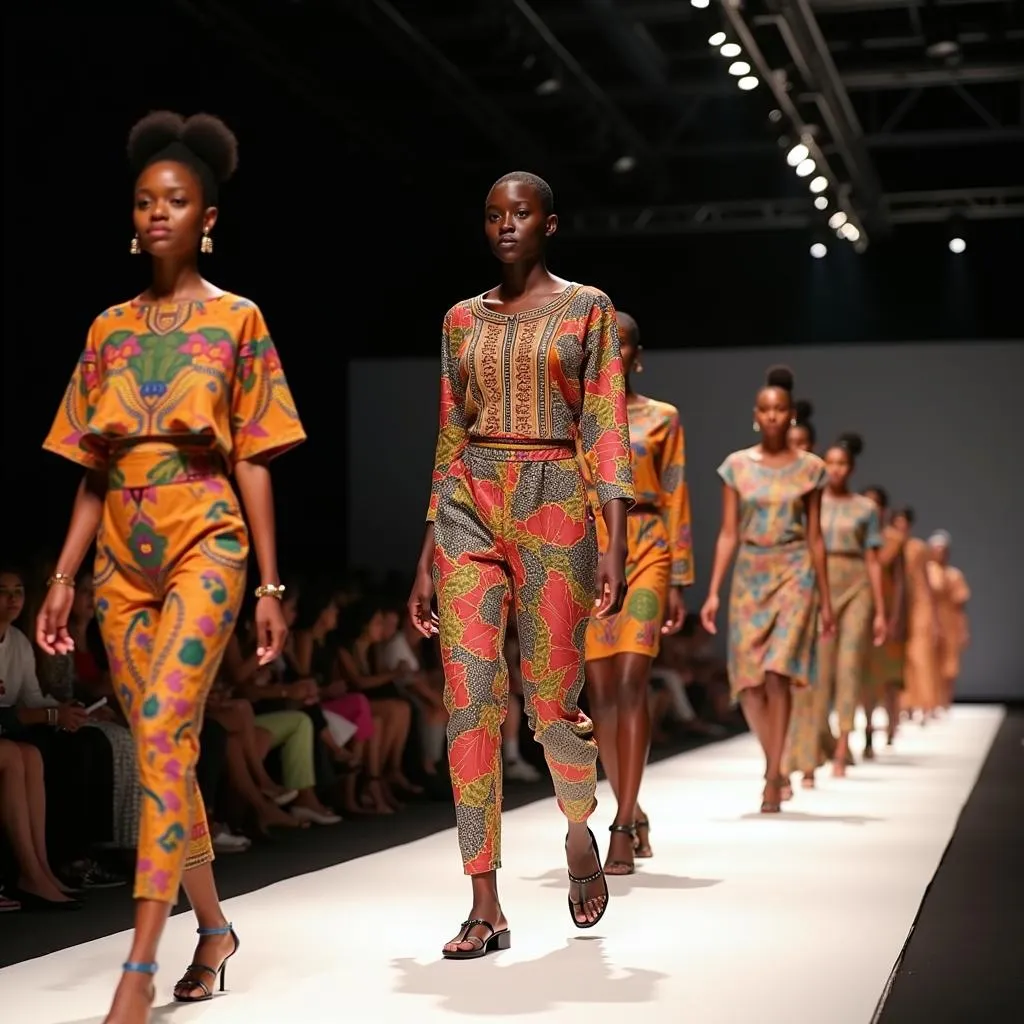A Journey Through African Costume: Culture, History, and Style
African Costume is much more than just clothing; it’s a vibrant tapestry woven from centuries of history, tradition, and artistry. Each region, country, and tribe on the continent boasts its own unique styles, reflecting their diverse environments, beliefs, and social structures. From the intricate beadwork of the Maasai to the colorful kente cloth of Ghana, African costume tells stories of heritage, status, and cultural identity.
The Significance of African Costume
 African people in ceremonial costumes
African people in ceremonial costumes
African costumes are not merely garments worn for everyday life; they hold deep cultural significance and serve a variety of purposes. They are often used to mark important milestones, such as births, initiations, weddings, and funerals. The colors, patterns, and materials used in a costume can often indicate a person’s age, social status, marital status, or even their profession. For example, in some cultures, married women wear specific headwraps to distinguish them from unmarried women.
Traditional Materials and Techniques
Across the continent, African costumes are crafted from a wide range of materials, many of which are sourced locally and sustainably. Natural fibers like cotton, silk, bark cloth, and animal hides are commonly used. These materials are often hand-woven, dyed using natural pigments, and embellished with intricate embroidery, beadwork, or metalwork.
 Close-up of intricate beadwork on African clothing
Close-up of intricate beadwork on African clothing
Each region has its own unique textile traditions. For instance, the Yoruba people of Nigeria are renowned for their aso oke, a hand-woven cloth often used for prestigious garments. In South Africa, the Ndebele people are known for their colorful beadwork, which adorns clothing, jewelry, and even their homes.
Exploring Regional Styles
From the vibrant kente cloth of Ghana to the flowing robes of the Sahara, African costumes offer a dazzling array of styles. Let’s delve into some of the most iconic regional examples:
West Africa
West Africa is a melting pot of cultures and its costumes reflect this diversity. The region is known for its vibrant colors, bold patterns, and elaborate headwraps. Some notable examples include:
- Kente cloth (Ghana): A handwoven cloth made from silk and cotton, characterized by its bright colors and geometric patterns. Kente cloth is often worn for special occasions and is a symbol of royalty and prestige.
- Boubou (Senegal, Mali): A long, flowing robe worn by both men and women, often made from brightly colored cotton or silk. Boubous can be plain or elaborately embroidered.
- Agbada (Nigeria): A wide-sleeved robe worn by men, usually over a matching buba (tunic) and sokoto (trousers). Agbadas are often made from luxurious fabrics like silk or brocade and are a symbol of wealth and status.
East Africa
East African costumes are influenced by the region’s nomadic and pastoralist communities. They often feature bright colors, intricate beadwork, and animal hides:
- Shuka (Maasai, Kenya and Tanzania): A brightly colored blanket-like garment worn by Maasai men and women. The shuka is often red or blue and is a symbol of the Maasai’s warrior culture.
- Kanga (East Africa): A rectangular piece of cotton cloth, often with a Swahili proverb printed on it. Kangas are worn by women as wraps, skirts, or headwraps.
- Kanzu (Tanzania): A long, white robe worn by men, often with a kofia (skullcap). The kanzu is a symbol of Islamic faith and is often worn for religious occasions.
Southern Africa
Southern African costumes are diverse, reflecting the region’s rich cultural heritage. Some notable examples include:
- Madila (Ndebele, South Africa): A beaded apron worn by married Ndebele women. Madila are often elaborately beaded and are a symbol of the woman’s status and family history.
- Isicoco (Zulu, South Africa): A beaded skirt worn by Zulu women. Isicoco are often worn with a matching beaded top and are a symbol of cultural pride.
- Herero dress (Namibia): A distinctive Victorian-inspired dress worn by Herero women. The dress is characterized by its long, full skirt and elaborate headpiece.
African Costume Ideas for Modern Expression
Today, African costume is experiencing a renaissance, with designers around the world incorporating traditional elements into contemporary fashion. From high-fashion runways to street style, African prints, fabrics, and techniques are being celebrated for their beauty and cultural significance.
 Modern fashion show featuring African-inspired designs
Modern fashion show featuring African-inspired designs
The Enduring Legacy of African Costume
African Carnival Costumes are a testament to the enduring legacy of African creativity and cultural expression. From traditional ceremonies to modern fashion, African costume continues to inspire, captivate, and tell stories. By understanding the history, symbolism, and artistry behind these garments, we can appreciate the rich cultural tapestry of the continent.
Frequently Asked Questions about African Costume
1. What is the most common fabric used in African clothing?
Cotton is the most widely used fabric in African clothing, followed by silk, bark cloth, and animal hides.
2. What do the colors in African clothing symbolize?
Colors hold significant meaning in many African cultures. Red often represents strength and power, while white can symbolize purity and peace. Black may represent mourning or spirituality, and yellow is often associated with wealth and royalty.
3. How can I incorporate African costume into my wardrobe?
You can easily incorporate African elements into your wardrobe by wearing African prints, jewelry, or accessories. You can also find contemporary clothing inspired by traditional African designs.
4. Where can I purchase authentic African clothing?
Authentic African clothing can be found online, in specialty stores, and from African artisans.
5. Is it appropriate to wear African costume if I am not African?
It is important to approach African costume with respect and sensitivity. Avoid wearing costumes that are considered sacred or culturally insensitive. Instead, opt for clothing that celebrates the beauty and diversity of African culture.
African art video can be a great resource for learning more about African costume and how it is made.
African jungle dance annual day is a great opportunity to experience the vibrancy of African culture and costume firsthand.
For further assistance, please do not hesitate to contact us:
Phone Number: +255768904061
Email: kaka.mag@gmail.com
Address: Mbarali DC Mawindi, Kangaga, Tanzania.
We have a dedicated customer support team available 24/7.
